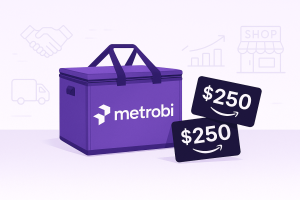In 2025, retail staff at Sephora increased their average transaction value using one simple technique: suggesting complementary products that genuinely helped customers. This illustrates the suggestive selling definition perfectly—helping customers enhance their main purchase while subtly encouraging them to buy more items. This isn’t just about selling more; it’s about selling smarter while staying aligned with the customer’s budget.
Sales success in 2025 demands a fresh approach. Today’s customers are informed, skeptical, and quick to spot traditional tactics. But here’s what works now: authentic recommendations that genuinely benefit the customer and ensure their satisfaction. Sales associates have embraced the importance of suggestive selling, making it a top priority to add value and enhance the buying experience.
The core of suggestive selling isn’t pushing products—it’s about understanding people and their needs. When a barista asks if you’d like a pastry with your coffee, they’re not just trying to sell products. They’re creating a better experience by showing how items complement each other. Done right, suggestive selling benefits everyone involved, including other customers who appreciate curated suggestions.
Think about your last great purchase. Chances are, it came with a helpful suggestion that made your experience better. Maybe it was the SD card recommended with your new camera or an accessory you hadn’t originally intended to buy but realized it added immense value to your main purchase. These moments happen when sellers focus on adding value, not just making sales.
In this comprehensive guide, we’ll explore why suggestive selling is important and highlight proven techniques that top sellers use to grow businesses while building stronger customer relationships. These methods work across industries—from retail to restaurants, digital products to professional services. You’ll learn exactly how to implement them in your business, backed by real-world examples and data.
These strategies aren’t just theoretical—they’re practical, tested techniques that successful businesses rely on to grow their revenue and leave customers satisfied. As consumers increasingly turn to digital platforms, understanding how to effectively engage in the online marketplace becomes crucial. Explore effective strategies for selling online to attract new customers and expand your reach. Utilizing these proven methods can enhance your online presence and drive sales growth.
Save 80% of delivery management time
We handle everything:
- Dedicated operations manager
- Real-time tracking dashboard
- Automated customer notifications
- Urgent issue resolution
Enhance Customer Experience with Cross-Selling Sales Techniques
Effective cross-selling improves customer experience and boosts sales.
Knowing products well and tailoring recommendations to needs are key.
Utilizes data and personalization for success.
Know Your Products Well
First, a deep understanding of your products is crucial. This isn’t just about knowing your inventory. It involves recognizing every feature, benefit, and limitation. Why is this vital? Because when you can confidently discuss and recommend products, you gain trust. People like buying from those who know what they’re talking about.
Imagine you’re in a sporting goods store. Pairing running shoes with quality socks or a water bottle isn’t just convenient; it’s practical. Apple mastered this with its ecosystem. Their devices, from iPhones to Macs, seamlessly work together. This keeps users within their ecosystem and encourages more purchases.
Understanding your full product line lets you connect these dots for customers. Tony Hsieh, Former CEO of Zappos, wisely noted, “Your brand is not what you sell; it’s the experience you deliver.” This highlights the essence of cross-selling in crafting customer experience.
Tailor Recommendations to Customer Needs
Personalized selling stands at the core of successful cross-selling. It’s about understanding what your customer requires before they even ask. As Steve Jobs said, “Get closer than ever to your customers.” Knowing them allows you to anticipate needs.
Personalization Effectiveness: A survey by Adobe indicates that 31% of customers feel understood with personalized offers, which increases brand trust for 24% of clients and helps 37% feel less overwhelmed during online shopping.
Incorporate customer data. Use past purchases, browsing habits, and even feedback. This all helps in crafting tailored recommendations. For example, Amazon excels at this by showing items frequently bought together, based on a customer’s past shopping behaviors.
Personalization goes beyond data. It involves genuine interactions. Encourage sales representatives to engage with customers and listen to their preferences.
Suggested Selling Rules
Listen – Truly understand what customers want.
Suggest logically – Recommendations must make sense.
Be honest – Don’t push irrelevant products.
Add value – Show how additional purchases satisfy needs.
Follow up – Ensure enhancements meet expectations.
Misconceptions often surround suggestive selling, like believing it’s pushy. In fact, successful suggestive selling is built on trust and value. By understanding these core principles, you enhance both the customer experience and your sales strategy. Managing inventory effectively is also essential for a successful sales strategy. Applying concepts like the sell-through rate allows businesses to gauge performance and make informed decisions about stock levels, ensuring optimal availability for suggestive selling techniques.
Approaching cross-selling with a well-rounded understanding and application can increase customer loyalty and revenue.
Sales and Profit Increases: According to McKinsey, effective cross-selling can boost sales by 20% and profits by 30%.
Boost Revenue Through Upselling Techniques and Customer Rewards Program
Upselling improves sales by offering valuable upgrades.
Limited-time offers increase urgency and boosts transactions.
Learn to implement AI-driven and industry-specific strategies.
Offer Value-Added Options
Explaining the Benefits of Upgraded Versions
Upselling is offering an enhanced version of a product that provides greater value. The idea is to make the customer see the worth of spending more. Companies succeed when they focus on benefits, not just features. Explain how an upgrade can improve the customer’s experience or outcome. For instance, software companies use premium packages to offer more features, better security, or personalized support. Real-life examples make a difference. Highlighting customer success stories achieves this.
Revenue Increase: According to Accenture, upselling can lead to a revenue increase of 10-30% on average.
Highlighting Customer Success Stories
Stories of satisfied customers encourage others to upgrade. Share narratives where users improved their productivity with premium versions. Showcasing these stories builds trust and demonstrates the tangible advantages of higher-priced alternatives.
Customer Lifetime Value: Businesses that effectively implement upselling strategies see a 20% increase in customer lifetime value (LTV), as reported by the Harvard Business Review.
Effective Communication Strategies
The key is communication. Be clear, concise, and relatable. Understand the customer’s needs and tailor your pitch accordingly. Avoid jargon and instead speak in terms the customer understands. Share benefits that matter to them. This human touch creates a connection and fosters the decision to buy an upgraded product.
Create Limited-Time Offers
Impact of Urgency on Decision-Making
Creating urgency can stimulate buying behavior. Limited-time offers to tap into this by making customers act fast. They don’t want to miss out. Research shows these strategies increase immediate purchases, improving overall sales figures.
Best Practices for Creating Enticing Offers
Effective offers are clear. Specify the discount or added value. Ensure the offer aligns with the customer’s needs, making them feel that they are making a smart choice, not a pressured one. Assure that the limited-time offer genuinely stands out for its exclusivity and benefit.
Examples from Leading Brands
Leading companies often use this technique. For instance, tech firms offer special weekend deals on premium services. Retailers might offer flash sales on luxury items. Amazon showcases “Deal of the Day” items, tapping into this urgency to drive sales.
Amazon's Example: Research indicates that 35% of Amazon's revenue is attributed to upselling and cross-selling practices.
Implement Personalized Recommendations
Personalization plays a large role in upselling. Data-driven insights allow businesses to tailor recommendations to individual customers. E-commerce sites that use data-driven suggestions see conversion rates up by 150%. Businesses implementing AI-powered upselling strategies see average revenue increases of 15%, emphasizing the potential.
Adopt Technology for Efficient Strategies
Using AI-Driven Techniques
AI boosts upselling efficiency. It predicts customer preferences and determines the best time to offer an upgrade. Imagine AI suggesting products based on browsing history or previous purchases. This precise approach increases both revenue and customer satisfaction. Advanced real-time analytics offer deeper insights, paving the way for smarter selling.
Revenue Growth from AI Recommendations: AI-powered cross-selling and upselling can lead to increased revenue by recommending complementary or higher-value products. For instance, it is reported that by 2023, 35% of purchases on Amazon were influenced by product recommendations based on AI algorithms.
Addressing Common Question: What is the Most Common Method of Suggestion Selling?
The most common method is upselling. Effective and well-studied, it encourages customers to choose higher-priced options through explained benefits and added value. Most businesses today benefit from implementing this as a crucial part of their sales strategy.
Further resources, such as “Crossing the Chasm” by Geoffrey A. Moore, provide deep insights into strategic selling. Books like “SPIN Selling” by Neil Rackham also offer advanced tactics for understanding customer psychology and improving sales outcomes. These materials enable interested readers to dig deeper into the art of upselling.
Cost-Effectiveness: Upselling to existing customers is noted to be 68% more cost-effective than acquiring new customers, according to Invesp.
Strengthen Sales Using Persuasive Suggestive Selling Techniques
Understanding customer desires is key to sales growth.
Building trust with clear and honest communication.
Real-life cases show how persuasive tactics work.
Active Listening to Understand Customer Desires
Active listening is more crucial than talking. It forms the backbone of establishing customer needs. This means giving full attention, acknowledging the speaker, and responding thoughtfully. If sales teams prioritize active listening, they can better tailor their offerings, leading to increased sales and customer loyalty. Rephrasing what the customer conveys not only helps in understanding but also shows the customer they are valued. Encouraging customers to elaborate on their needs can open more opportunities for effective selling. The phrase, “90% of selling is conviction and 10% is persuasion,” by Shiv Khera emphasizes the need for understanding in persuasion.
Reading more on the subject? “The Seven Habits of Highly Effective People” by Stephen Covey offers insights into how active listening fits within broader communicative strategies. Covey’s habit of “seek first to understand, then to be understood” can be transformative for sales professionals.
Another useful tip: positive language can significantly uplift customer engagement. Phrases like “I will update you” or “Let me look into that for you” project a proactive approach to problem-solving. Combining these active listening and communication skills often results in higher satisfaction rates.
Build Trust with Honesty and Transparency
Honesty forms the foundation of a great salesperson-customer relationship. Customers appreciate when salespersons are upfront about product capabilities or limitations. Being honest about prices, stock availability, or even admitting when you don’t have the answer at hand, can build a trusting relationship. Seth Godin’s quote, “Don’t find customers for your products, find products for your customers,” aligns with the notion of placing the customer’s needs at the forefront, through honest and straightforward dialogue.
Impact of Quick Responses: A survey by PwC revealed that 74% of consumers build trust through quick responses to customer concerns
Explore the effects of transparency with case studies from brands like Patagonia, renowned for maintaining customer loyalty through their sustainable and transparent practices. These stories demonstrate that honesty not only fosters immediate trust but also ensures long-term customer retention.
Salesforce’s success can serve as an inspiration—a brand leading with transparency, as seen in its approach to customer data handling.
Persuasive Storytelling in Sales
Storytelling is not just an art; it’s a powerful persuasive tool that connects with customers on an emotional level. A well-delivered story can make products more appealing and relatable. By linking product features with customer narratives, sales teams can trigger emotional responses that motivate buying decisions. Storytelling has the distinct advantage of embedding the customer into the value proposition.
Conversion Rate Increase: Storytelling can boost conversions by up to 30%.
When crafting an effective story, focus on real-life examples or customer success stories. Highlight the transformation or benefit experienced by the customer. Katherine Barchetti said, “Make a customer, not a sale,” which echoes the importance of building experiences around the sales process, not just transactions.
Customer Loyalty Boost: Companies that utilize storytelling effectively can see a 20% increase in customer loyalty.
For those keen on exploring this deeper, “Contagious: How to Build Word of Mouth in the Digital Age” by Jonah Berger offers an academic yet practical look into crafting messages that stick. It examines how emotions drive sharing, which is crucial for persuasive storytelling.
Exploring methodologies that integrate emotional intelligence in storytelling can enrich customer interactions, ultimately fostering deeper sales relationships.
Increase Transactions with Customer Engagement Tips
Emotional ties boost sales.
Use social proof to enhance trust.
Aim for personalized interactions.
Foster Emotional Connections
The key to boosting sales lies in building emotional connections. Personal stories can greatly impact this process. When brands share authentic user testimonials, it makes a big difference. Customers feel more connected when they hear real people talk about their experiences.
This kind of emotional marketing has proven to be effective. According to data, 71% of customers recommend brands they form an emotional connection with. This highlights the importance of embedding personal stories in sales strategies. Ann Handley’s “Everybody Writes” provides guidance on how to craft these narratives effectively.
Brand Advocacy: A report from Motista indicates that 71% of customers are more likely to recommend a brand based on their emotional connection to it.
Emotions directly influence buying decisions. Companies need to understand this to engage customers better. Books like “Thinking, Fast and Slow” by Daniel Kahneman delve deeper into how human psychology affects choices. Exploring such resources helps businesses align their strategies with consumer motivations.
Emotional Drivers: Research indicates that emotions play a crucial role in purchasing decisions, with studies showing that 95% of purchasing decisions are influenced by emotional responses.
It’s vital to personalize interactions. Most customers engage only with brands that personalize experiences. Simple techniques, like using customers’ first names in communications, are more effective than people think. Implementing a nuanced understanding of customer preferences into marketing can significantly enhance engagement. The book “The Elements of User Experience” by Jesse James Garrett can offer insights on designing customer-centric interactions.
Increase in Sales: Businesses that utilize emotional storytelling see, on average, a 23% increase in sales.
Leverage Social Proof
Social proof plays a huge role in decision-making. Displaying user reviews is a proven way to increase trust. Reviews show the extent to which potential buyers rely on others’ experiences. To learn more about mastering this area, “The Psychology of Influence” by Robert Cialdini is a must-read.
Importance of Reviews: A report from Brand Rated states that 95% of consumers read online reviews before making a purchase.
Showcasing real customer feedback is essential. Businesses must make these reviews easily accessible, ensuring their authenticity. Strategies should focus on curating feedback that reflects diverse experiences and outcomes. Exploring advanced courses like Coursera’s “Behavioral Economics” can help in understanding consumer perceptions and biases better.
Another strategy is encouraging customer participation in providing reviews. Incentive programs, like discounts or loyalty points, often motivate customers to share their opinions. User-generated content can also boost conversion rates. This form of engagement not only builds community but also enriches the brand’s authenticity.
Conversion Rate Increase: According to a report from Inbeat, user-generated content (UGC) can increase conversions by 161% when included on e-commerce product pages.
Trends and Changes in Suggestive Selling for 2025
AI is transforming personalized selling with precision.
Tools simplify suggestive selling, boosting efficiency.
Integration tips help sales teams adapt smoothly.
The Rise of AI in Personalized Selling
Recent Advancements in AI for Sales
Artificial intelligence, once a futuristic idea, is now a major player in sales. It’s more accurate than ever. Today’s AI can analyze huge datasets to predict buying patterns. This technology improves suggestive selling by tailoring recommendations to each customer’s preferences. A notable advancement is in natural language processing (NLP). NLP helps sales bots and tools understand everyday language which leads to better customer interactions. Additionally, AI’s ability to process visual data is expanding. Sales teams can create personalized experiences through visual recognition technology. A book like “Prediction Machines” by Ajay Agrawal explores how AI is reshaping business decision-making, shedding light on its implications for sales.
Increase in Upselling Effectiveness: According to a report from B2B Rocket, businesses utilizing AI-driven recommendations can see an increase in revenue per customer by 15-20%.
How AI Tools are Boosting Suggestive Selling
AI is not just about predictions; it’s about executing strategies. AI-powered tools can automatically recommend additional products based on past purchases. They adjust in real time to customer behavior. This adaptability ensures that suggestions are always relevant. A prominent example is chatbots. They engage customers at any time, offering recommendations without human intervention.
AI also assists in optimizing pricing strategies by analyzing competitors and market trends. However, there is a concern about over-reliance on automation. The human touch remains crucial for building trust. Combining AI with human insight enhances suggestive selling better than relying solely on machines. The book “AI Superpowers” by Kai-Fu Lee delves into the capabilities and challenges of AI in various sectors, including sales.
Practical Tips for Integrating AI in Sales Processes
Integrating AI into sales processes requires careful planning. Start by identifying specific tasks that AI can automate. This includes customer data analysis, recommendation systems, and customer service inquiries. Use AI tools that are user-friendly and require minimal training. Align AI capabilities with business goals; don’t just adopt technology for its own sake. It’s essential to regularly update AI models to reflect current trends to maintain accuracy.
Furthermore, balance AI use with human input to preserve personal connection. Train sales teams to interpret AI insights effectively. Workshops on AI tools can bridge the gap between technology and human skills. “The Fourth Industrial Revolution” by Klaus Schwab provides insights into how AI and other technologies are changing industries. It offers context for adapting sales strategies to future demands.
Adapting Suggestive Selling to Today’s Market Demands
Understanding Evolving Consumer Expectations
Consumer expectations are shifting rapidly. Personalization is now a baseline rather than an added value. Customers expect brands to understand their needs and preferences inherently. This change is driven by the widespread use of smart devices and digital platforms that offer tailored content. The demand for convenience and immediacy is also growing. Brands that can provide fast, seamless, and customized experiences stand out.
However, this also raises challenges. Businesses must manage increasing data privacy concerns. Trust must be maintained while using customer data for personalization. Books like “Digital Minimalism” by Cal Newport can provide guidance on balancing technology use and consumer trust.
Integrating Human Elements in Suggestive Selling
Even as AI takes a larger role, human interaction cannot be sidelined. People are social creatures. They value empathy and personalized attention. Sales teams can use AI insights to engage more deeply with customers. Listening actively and responding to non-verbal cues can enhance the suggestive selling process. Creating stories around products helps build emotional connections with consumers.
It’s crucial to nurture authentic relationships beyond transactional interactions. This balance between machine efficiency and human touch defines the modern sales landscape. “The Human Brand” by Chris Malone and Susan T. Fiske discusses how relationships shape consumer behavior, offering insights into maintaining relevance in an AI-driven market.
Integrating these insights helps prepare for further advancements heading into the next stages of suggestive selling’s transformation.
Future Predictions: How Suggestive Selling Will Evolve
VR will transform shopping with immersive experiences.
Data privacy will become crucial for trust.
Sustainable selling will gain momentum.
Embracing Virtual Reality to Enhance Shopping Experience
The retail industry is gearing up for a substantial shift with the integration of virtual reality (VR) technology. Virtual reality provides customers with an immersive shopping experience that goes beyond traditional online or in-store experiences. This evolution offers an interactive platform for consumers to explore products and even store layouts before visiting a physical location.
Predictions indicate that VR will not just enhance customer satisfaction but also increase the potential of suggestive selling by displaying related items in a virtual environment.
For retailers considering VR, it is crucial to incorporate artificial intelligence (AI) to tailor these experiences. The integration of AI into VR can analyze user preferences and behavior to adapt store designs and offer personalized suggestions seamlessly.
“Artificial intelligence is increasingly intertwined with VR, creating a more personalized and intuitive user experience.” This means customers could virtually walk through a store and receive suggestions based on their real-time interactions and past purchasing behavior.
The anticipated response from customers, particularly younger demographics, suggests enthusiasm and openness to VR shopping. However, retailers must bear in mind the challenges of ensuring return on investment and providing an experience that complements, rather than overwhelms, the consumer.
For those interested in the in-depth integration of VR in retail, resources like “Virtual Reality & Augmented Reality: How to Start Using VR and AR Today” by M. Kopp can provide further insights.
The Growing Importance of Data Privacy
With data privacy regulations tightening globally, the balance between personalization and privacy is a finer line than ever. Big data, predictive analytics, and other technological tools have become pivotal in crafting personalized marketing strategies.
However, with these capabilities comes the responsibility to protect customer data. Companies engaged in suggestive selling must navigate these regulations carefully to avoid breaching trust, which can compromise their market position.
Consumer Concerns: According to a report, 86% of consumers express that data privacy is a growing concern for them.
Achieving this balance involves retargeting strategies, transparent data policies, and giving customers control over their data. For instance, retailers should ensure that customers have opt-in options and clear information on how their data will be used. Building such trust not only complies with regulations but also fortifies the brand’s reputation.
An emerging strategy for balancing privacy with sales tactics is embedding privacy measures into the design of marketing campaigns. This approach, often referred to as “privacy by design,” emphasizes upfront privacy considerations rather than treating them as an afterthought. Books like “Data Privacy and GDPR Handbook” by S. Copestake provide foundational principles and guidelines on maintaining customer trust in a digital age packed with suggestive selling.
Shifting Focus to Sustainable and Ethical Selling
Sustainability is increasingly influencing consumer decisions, with many brands recognizing the necessity to pivot towards ethical practices. We see a growing trend where retailers incorporate sustainability into their value propositions. Not only are these initiatives responses to consumer demands, but they also present lucrative opportunities for brands to differentiate themselves.
Companies can weave sustainability into their suggestive selling by highlighting eco-friendly features of products or offering incentives for purchasing sustainable alternatives. For instance, suggesting solar-powered outdoor equipment when a customer buys camping gear encourages responsible consumerism. Notable examples include fashion brands like Patagonia, renowned for their transparent and sustainable practices.
Resource-wise, retailers can look to books such as “Sustainable Business Development: Inventing the Future Through Strategy, Innovation, and Leadership” by D. Dentchev to fuel their sustainable sales transitions. These conversations are more than trends — they represent changes in consumer values that impact buying decisions. Addressing these matters can lead to deeper connections with customers who are motivated by more than just product quality but also by values that align with their ethical standards.
For businesses poised to adapt, the shift towards sustainable and ethical selling isn’t just an obligation but an opportunity to lead by example and resonate with the modern consumer.
Conclusion
Suggestive selling is changing fast in 2025, with AI and VR reshaping how businesses connect with customers. The key is finding the right mix of technology and human touch to enhance the customer experience and boost revenue. Remember: good suggestive selling starts with understanding your customer’s needs, not just pushing products, ensuring it aligns with their budget and builds trust.
The techniques we covered — from cross-selling to building trust through honest communication — work because they focus on helping shoppers, not just selling to them. When you combine these methods with new tools like AI-powered recommendations and VR shopping experiences, you create a powerful sales technique that respects customer data and adds value through complementary items, add-ons, and product bundles.
Looking ahead, successful businesses will be those that adapt these techniques while staying true to ethical selling practices. Start small: pick one sales pitch from this guide and test it this week, whether it’s suggesting additional items, creating product bundles, or introducing a loyalty program to reward customers and encourage repeat business. Monitor your results and adjust as needed to help clients save money and improve their overall experience.
The future of sales isn’t about pushing products — it’s about creating a win-win by delivering value for current customers while growing your business. Whether you’re implementing active listening techniques or exploring AI tools, remember that authentic customer relationships and positive reviews remain at the heart of successful suggestive selling. By focusing on helpful and personalized suggestions, you’ll turn initial purchases into long-term success.
Time to put these strategies into practice. Your next sale awaits, and with the right approach, your business can grow by helping buyers and shoppers make informed decisions without overwhelming them with too many options.














